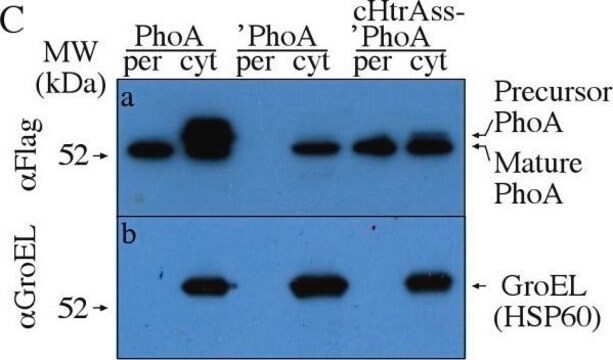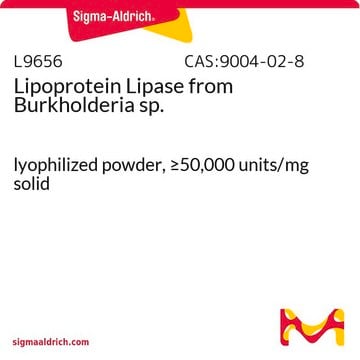A2179
Anti-Mouse IgG (Fab specific)–Alkaline Phosphatase antibody produced in goat
affinity isolated antibody, buffered aqueous solution
Sinónimos:
Goat Anti-Mouse IgG (Fab specific)–AP
About This Item
Productos recomendados
origen biológico
goat
conjugado
alkaline phosphatase conjugate
forma del anticuerpo
affinity isolated antibody
tipo de anticuerpo
secondary antibodies
clon
polyclonal
formulario
buffered aqueous solution
reactividad de especies
mouse
no debe reaccionar con
horse, human, bovine
técnicas
direct ELISA: 1:40,000
immunohistochemistry (formalin-fixed, paraffin-embedded sections): 1:25
western blot (chemiluminescent): 1:80,000
Condiciones de envío
wet ice
temp. de almacenamiento
2-8°C
modificación del objetivo postraduccional
unmodified
¿Está buscando productos similares? Visita Guía de comparación de productos
Descripción general
Inmunógeno
Aplicación
- western blotting
- immunoblotting
- enzyme linked immunosorbent assay (ELISA)
- immunohistochemistry
Acciones bioquímicas o fisiológicas
Otras notas
Forma física
Nota de preparación
Cláusula de descargo de responsabilidad
Not finding the right product?
Try our Herramienta de selección de productos.
Código de clase de almacenamiento
12 - Non Combustible Liquids
Clase de riesgo para el agua (WGK)
WGK 2
Certificados de análisis (COA)
Busque Certificados de análisis (COA) introduciendo el número de lote del producto. Los números de lote se encuentran en la etiqueta del producto después de las palabras «Lot» o «Batch»
¿Ya tiene este producto?
Encuentre la documentación para los productos que ha comprado recientemente en la Biblioteca de documentos.
Nuestro equipo de científicos tiene experiencia en todas las áreas de investigación: Ciencias de la vida, Ciencia de los materiales, Síntesis química, Cromatografía, Analítica y muchas otras.
Póngase en contacto con el Servicio técnico




![Tributyl[(methoxymethoxy)methyl]stannane AldrichCPR](/deepweb/assets/sigmaaldrich/product/structures/405/394/e2659ee0-7927-4ef9-b0bc-dc331065f409/640/e2659ee0-7927-4ef9-b0bc-dc331065f409.png)



